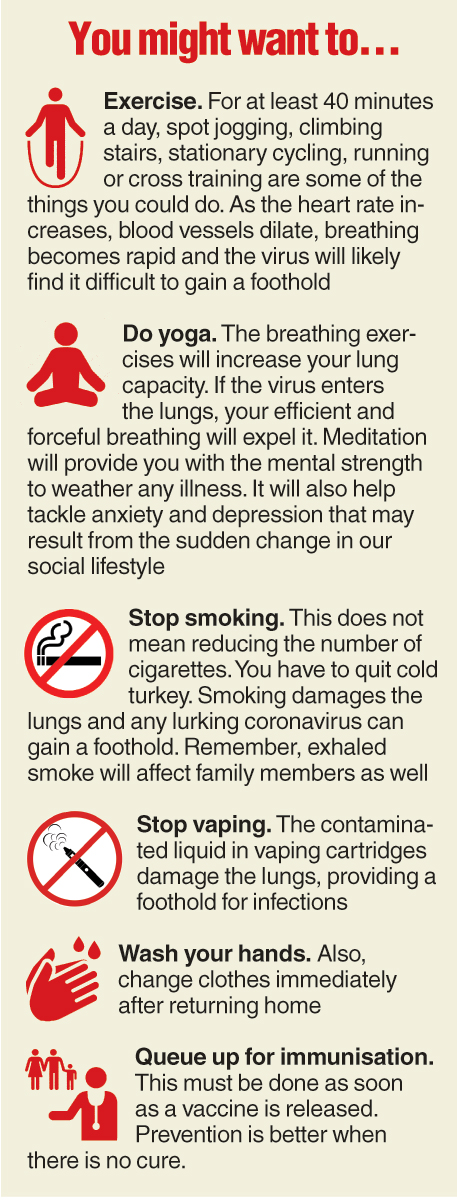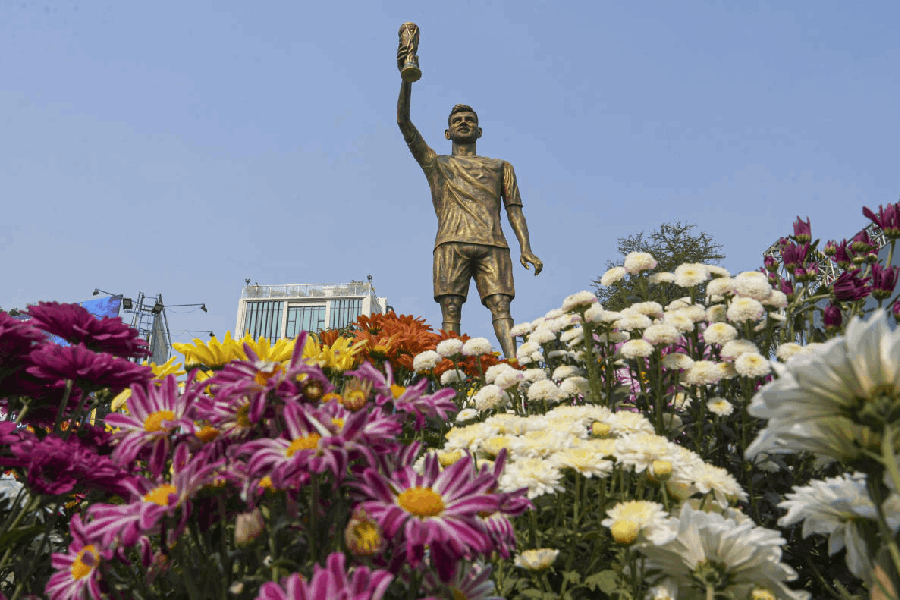
A few important things to keep in mind. Sabyasachi Kundu
What is it going to be like hereafter, you might wonder. The road ahead is long and hazy with no clear answers from medical professionals or politicians. All that can be said with certitude is that we cannot underestimate the virulence or survival potential of this highly infectious virus. Even when the rate of infection falls, the virus is likely to simmer and lurk beneath the surface for months or even years. In fact, a resurgence has been predicted sometime end 2020 to coincide with the cold and flu season.
Almost overnight we were told to radically change our lifestyles and the way we think and act. Now we are hoping that post the lockdown, we will be able to reclaim our old lives. But the new “normal” may, out of necessity, be quite different from the old one.
Most likely, we have to continue social distancing and avoid gatherings for a year or two. The coronavirus causes mild disease from which 80 per cent people recover without medical intervention. Some may need support in the form of paracetamol or cough syrup. Twenty five per cent may have no symptoms at all even if they have been infected. Those people who have recovered from the virus, or those who did not know they were infected in the first place, are quite likely to spread the virus to other susceptible people they might encounter.
The virus will simmer sub-clinically with sporadic spikes in certain areas for six to eight months. This will build up herd immunity. As fewer people remain susceptible, the virus will be unable to find a host and infections will eventually die down. This happened in the past with other pandemics such as the Spanish flu, avian flu, Mers (Middle East respiratory syndrome) and Sars (severe acute respiratory syndrome).
It is theoretically possible to test people after the lockdown, especially those who need to go out of their houses to study or work. There are two types of tests that can be used. Polymerase chain reaction (PCR) tests are used to detect the presence of the viral RNA (ribonucleic acid) in the body before antibodies form or symptoms of the disease manifest. These tests can tell very early on whether or not someone has the virus. The tests can be used to screen the population after the lockdown to determine who can re-enter crowded areas.
On the flipside, PCR tests are expensive and labour-intensive, and 30 per cent may yield incorrect results. If anyone tests positive, he or she should be home quarantined and socially isolated until the virus is cleared from the system.
Anyone who has survived the coronavirus would have developed antibodies. There are tests to ascertain this. Usually, such a person is immune to further attacks unless the virus mutates. A relapse, however, is not unknown.
Another way is to immunise the population but that is a Herculean task. A vaccine is yet to be developed, and even when it finally comes along, many people may not be able to access or afford it.
As for masks, they are not part of our culture but for the next year or maybe even for the rest of our lives, wearing them and the rest of the hygiene drill adopted during the Covid-19 pandemic will need to be kept up. Experiments have shown that 92-99 per cent of droplets are blocked by a mask whether it is a disposable surgical mask, a homemade one or just two layers of cotton cloth. Cotton masks, however, have to be washed daily.
A mask prevents the user from expelling the virus into the air and also keeps the infected droplets from being deposited on the face. It not only protects against Covid-19 but a plethora of other infections as well. It will also help restrict the spread of tuberculosis — remember, India has 2.2 million cases of tuberculosis and 2,20,000 annual deaths. Hereafter, one should always take care to sneeze or cough into a disposable tissue. The next best thing is to cough into the elbow.
The government has decided to introduce an ordinance to spot-fine anyone who spits. This will reduce the incidence of viral and bacterial diseases spread by aerosols. Spit settles on the road and sticks to the bottom of footwear. It contains infective particles. We can inadvertently carry these over long distances and into our home, which is why we need to leave all footwear at the door.
Then there is that thing most of us do — we tend to go to school, college or office even if we are not well. There is the hope that the discomfort, fever or other symptoms will pass in a while. Teachers and employers too are not sympathetic about “off days”. The symptoms of early Covid-19 infection are so non-specific — not just colds and coughs, but fever, diarrhoea, loss of smell and taste — that all should be viewed with suspicion. Since the disease will probably be around for at least a year, even after the lockdown it makes sense not to be around others if you are unwell. It is not practical for everyone to undergo testing each time, which is why we should be responsible and self-isolate.
We also need to stop touching our faces. This may be one of those habits such as rubbing the eyes or the nose or just resting the face against the hands. No one knows exactly how long the coronavirus can last on a surface after being expelled from the body. It most definitely can last a couple of hours; it can also stretch for days. Since hands are likely to have touched an infected surface — virus deposited by an asymptomatic carrier — during daily activities, touching the face at any time remains an absolute no-no.
All public spaces are likely to be contaminated. And one needs to be mindful, especially of railings of buses, car and door handles, and countertops. Even the hairdresser’s chair and plastic wraps used during haircuts and beauty parlour procedures are suspect. As we trek in and out of our houses, the first thing that we have to condition ourselves to do is to remove footwear, wash hands and change clothes.
The elderly, patients undergoing cancer treatment, those with HIV/AIDS, the obese, the diabetics, those with hypertension and those on dialysis are all at high risk. Since the virus is going to be with us for a long time, there will be sudden pockets of resurgence. Families with high risk individuals need to maintain a vigilant hygienic and restricted lifestyle with “corona-safe habits” for years.
It makes supreme sense to shrink the scale of the big, fat Indian wedding, birthday celebrations, religious events and sporting competitions this year and maybe even the next. Nobody really knows everything about this infection. It started with a patient zero in Wuhan in China, but when exactly we will have zero patients in India is the question on everyone’s minds.
Dr Mathai writes a regular health and wellness column for The Telegraph.










